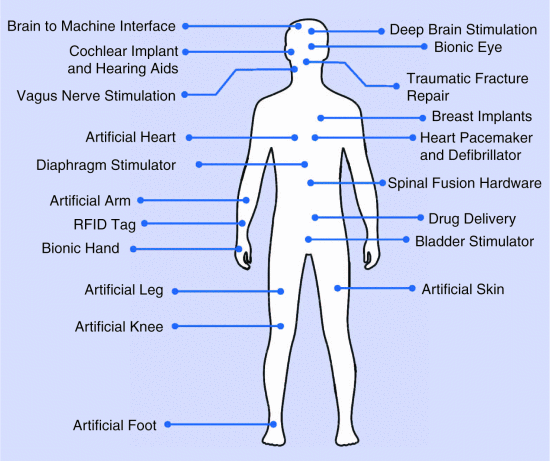 Figure 1.Map of the human body showing areas of typical artificial implants currently either already used or under development.
Figure 1.Map of the human body showing areas of typical artificial implants currently either already used or under development. History, Controversies, and Social Implications
Many recent advances in implantable devices not so long ago would have been strictly in the domain of science fiction. At the same time, the public remains mystified [1], if not conflicted about implantable technologies. Rising awareness about social issues related to implantable devices requires further exploration.
Recently, even popular media are running stories related to implantable technologies. For example, in a recent news story in a Canadian daily newspaper, the author writes about a patient who was left immobile and brain damaged for more than two decades after a car accident. But she became again able to communicate with her relatives by the means of an eye-motion tracking hardware with the signal processing software running on a tablet. The story follows financial, legal, and social issues that accompanied the case. For example, the legal arguments revolved mostly around the patient’s right to improve her “quality of life.” The general sense was that the patient and family were happy with the overall benefit of the technology. The public discussion focused on two main topics. First, what is really required to have a minimal “quality of life” and how much does it cost; second, should technology itself and its creators receive credit for this and other similar “miraculous improvements,” or was it simply God’s will that really enabled it.
Implantable technology is very controversial. Use of these technologies opens a rather wide range of questions, dilemmas, and arguments revolving around morality vs. legality, business profit versus genuine altruism, religion versus science and technology, animal rights versus human rights, to name but a few. The above example shows that implantable technology blurs further the boundary between what is living (human) and what is non-living (machine). There is a need for an informed discussion about these developments.
Historical Classification
The miniaturization and development of biomedical implantable devices parallels development in science and engineering, more specifically in the fields of microelectronics and IC technologies, robotics, and power sources and energy harvesting. Early historical reviews on implantable devices [2] are recently updated by a number of excellent and comprehensive technical reviews that show the state-of-the-art [3]-[6], and in popular books [7]. However, the objective of this paper is to contribute by reviewing historical background and some of the key developments that enabled modern implants, but within the social and cultural context. Thus, a rather wider range of references, not all strictly technical, will be used and included in this review. To illustrate the current state-of-the-art, Figure 1 shows a map of the human body, pointing out some of the most common areas targeted by modern implantable technology, either already in the clinical use or still in the research stage.
Technology and the Human Body
From an engineering perspective, the design of implantable systems is constrained by a set of specific system requirements such as: a) biocompatibility, b) bio-resistance, c) small size, d) density matched to neural tissue, and e) minimal tethering to adjacent structures. A possible strictly engineering classification of general biomedical devices in relation to the human body is: a) wearable devices, b) implantable devices, and c) ingestible devices [8].
Here, however, I prefer to define the body–technology relationship in somewhat broader sense, that is, relative to distance from the human body. This perspective is shown in Figure 2, which introduces the following six general categories [9]:
- infinitely far away technology: in the pre-technological epoch of human evolution, i.e., while we were still evolving into complex organism, the technology is non-existent;
- external (shared) technology: the most important technology (arguably) that humans have developed, the controlled fire, could be classified as the same as, for example, public transport, schools, phone networks, and the healthcare system;
- external (personal) technology: technologies that once may have been shared, but now are closer to our body and have become personal, e.g., cars, cellphones, computers, and eyeglasses, could be grouped into this category;
- internal (temporary) technology: following the trend of reducing physical distance between a machine and human body, technologies that temporarily cross the traditional boundary line of our body, e.g., contact lenses and ingestible biotelemetric capsules, are examples of this category. We note that technologies in this category can be easily put in and removed by the user, i.e., they spent only limited time within the body;
- internal (permanent) technologies: the pacemaker, and dental and cochlear implants, for example, are permanently inserted in the body by medical procedure and they cannot be removed by the user. These technologies are expected to function and co-exist with the natural human organs during the the user’s lifetime without user intervention, to have ultra-low power consumption, and to have natural multi-degree movement for the prosthetics; and,
- bio-mechanical integrated technology: obviously, if this trend continues in the same direction, the ratio of internal (permanent) technologies relative to body size is steadily increasing. Therefore it is reasonable to extrapolate the trend into not so distant future and infer that we may reach the phase of complete integration between our biological selves and technology, where the natural organs seamlessly co-existing with the implanted ones.
Figure 2.Technology distance: As we developed as species, starting from simple cell organisms, it seems that on a global scale the distance between our bodies and technology has been constantly reducing.
Thus, on the philosophical level, it is natural to pose the following questions: Will humans at some point stop being humans? If so, at what moment will this occur — when will humans become what we now consider machines? Where is the boundary between the two anyway?
Business Side of eHealth
According to various business sources and reports, as well as scientific journals freely available on the Internet, companies working on medical devices report estimated total worldwide revenue of more than $200 billion a year. The United States alone generates about 30% of this sum, being by far the largest shareholder. That is to say, regardless of the absolute numbers, without the doubt the business aspect of implantable medical devices is a very important part of the world economy, providing (aside from medical benefits) job opportunities for engineers, and technical problems to be solved for the research community. However, as any other competitive business, it is almost impossible to evaluate the location of the boundary between the need for reasonable business profit and genuine usefulness, and between necessity for a certain device, drug, or procedure and how the marketing strategies of the benefiting companies are influenced by the profit margins.
In Table I contemporary implantable technologies are summarized with respect to the number of yearly users, total market share, and average cost of each procedure. This data is aggregated and extrapolated for the U.S. only, based on publicly available information. It therefore should be read more in relative terms, as worldwide data is not that readily available, to illustrate market share for some of the most commonly used implantable technologies.
Interface between Living and Non-Living Beings
The connection between living and non-living beings has been the subject of human curiosity ever since we became self-aware, and this remains a most fascinating discussion topic today. As J. Müller stated,
“Though there appears to be something in the phenomena of living beings which cannot be explained by ordinary mechanical, physical or chemical laws, much may be so explained, and we may without fear push these explanations as far as we can, so long as we keep to the solid ground of observation and experiment.”
This passage from Müller’s book [10] inspired Emil du Bois-Reymond to discover the action potential of a living cell membrane [11], [12], which is the fundamental mechanism for transmitting electric signals along neurons, and for activation of intracellular processes (see Figure 3. The possible discovery of interaction between the living and non-living beings at the level of thoughts (i.e., “brain waves”) has inspired science fiction writers and popular media ever since. In fact, these scientific advances touch the most profound beliefs and trigger heated discussions around the relationship between science, religion, and our fundamental existence. These reoccurring discussions are common to our society regardless of the era. They are famously illustrated by C. Sagan in his novel [13], turned into a film, as well as in other popular media that have presented these controversial discussions throughout history [14].
Brain-to-Machine Interface for Motor Actions
Despite societal concerns, with the action potential mechanism already well understood, further advances in microelectronic technologies enabled development of the neural probe [15] (see Figure 4). Recent reported developments advanced the idea of a neural probe by introducing the concept of “neural dust,” a large number of wireless electrodes that can be affixed directly to multiple nerves [16] thus create multiple wireless sensing nodes inside the body.
Consequently, what is still considered by the general public to be science fiction, namely “controlling machines directly by thoughts,” became reality. However, at the fundamental level, as soon as electrical signals are generated by the brain, and transmitted neurons (the living cells) are picked by the neural probe (i.e., a non-living object made of metal and silicon), the problem stops being transcendent or even bio-medical, and it becomes strictly a signal-processing and engineering problem, no magic required. Then, like a good illusionist, a living being equipped with implanted electronics and signal processing algorithms (a.k.a., a brain-to-machine interface, or BMI) is capable of moving a robotic arm and performing actions that are normally done by our natural limbs, simply by the process of natural thinking in the brain [17]. Successful application of BMI is culmination of the incremental advances over the previous two decades a specific topic of electrical activity of single motor cortical neurons in macaque monkeys. After the first experimental demonstrations of BMI, where a tiny owl monkey named Belle [17] with BMI chip implanted in her brain controlled a robotic arm installed nearby, this DARPA funded technology reached the clinical stage. There are now already several humans using one or even both bionic arms instead of their lost limbs [18].
Improved understanding of the electrical activity of motor cortical neurons thus firmly established two new research topics: the development of the bionic arm and of the bionic foot.
Bionic Arm
Prosthetic arms made of wood and metal with various tools attached at the end, which were simple but surprisingly effective, have been used over centuries. However, in modern times despite advances in engineering and availability, as of 2007, up to 75% of users were rejecting electric prosthetics [19]. One of the main reasons for the rejection, aside from the social acceptance and awkwardness, was that the robotic prosthetic arms are heavy, difficult to master, and have very slow response due to the traditional control technology used for the industrial type robots. Currently, external robotic prosthetic technology is advancing rapidly by implementing an improved brain to machine interface as well as new materials, which enables the prosthetics seamless integration into our bodies [20].
Bionic Leg
Similarly to the prosthetic arm, wooden legs were in use an equally long time. Although being very helpful with balance, the users often described the feeling of using them as if walking on sand without feedback sensation of the natural foot. The first significant change happened with the introduction of much publicized “Blade Runner” prosthetics that enabled a double-amputee to compete in the 2012 Olympic Games [21]. The advantage of the new carbon-fiber “blade,” shown in Figure 5(c), over a traditional “wooden leg” was obvious in many ways. From the engineering perspective, the new prosthetics were more similar to biological limbs. The natural “foot up-down effect” was achieved by the blades storing mechanical energy during the pushing-down phase and releasing it during the “pushing-up” phase.
Ongoing research is focused on integrating the three main elements of the bionic leg prosthetics: the artificial hip, the knee, and the leg itself (Figure 5 (a)-(c)). BMI systems are integrated with the rest of the bionic leg hardware by using the brain’s electrical signals arriving to the base of the remaining end of leg where the neural probe is placed to pick up signals and process them electronically.
Two mechanical elements of the bionic leg, knee, and hip, are among the most commonly implanted devices due to the continuous friction in the joints that leads to breakdown of cartilage and bone. Replacement of these two mechanical implants presents a significant (and profitable, see Table I) engineering challenge, while post-operative complications still may be associated with major risks that in some cases may lead into the patient’s death within the first 90 days after operation (various statistics are publicly available).
Noninvasive BMI Technique
As opposed to deeply invasive BMI techniques using implanted probes and ICs that are in direct contact with brain’s neurons, thus providing better signal-to-noise resolution (SNR) and spatial resolution, non-invasive electroencephalography (EEG) techniques apply electrodes externally on the skin. Consequently, the SNR and spatial resolution are greatly degraded. As a counterargument, electrical signals traveling under the skin, for example to control movement of the eye, are relatively easily picked up and processed by external electronics, which makes this approach suitable for design of simpler BMI control systems (see Figure 6) [22]. Recently, there are a number of commercial applications using this principle in video gaming, medicine, military, and other fields.
Brain to Machine Interface for Neural Actions
Aside from detecting activities related to motor function, the neural probe interface is widely used to tap into other areas of the brain. Namely, accessing the inner regions of the brain, tapping into the audio nerve, and more recently into the optical nerve are the most active lines of research in this direction. Three typical examples of non-motor BMI are as follows.
Deep Brain Stimulator
Since 1987 when A.L. Benabid [23] developed deep brain stimulation technique to treat Parkinson’s disease, the field of deep brain neurosurgery applied this technique to treat chronic pain, major depression, and obsessive-compulsive disorder. Lately also has been applied to experimental treatment of Tourette syndrome and other applications. Similarly to other invasive techniques, this technique also adopts the use of robotic neurosurgical tools [24].
Cochlear
Regarded as one of the most successful commercial implants to date, the Cochlear implant [25] has been in clinical use since 1977. In the traditional setup, a microphone and sound processor are mounted externally. Then a short distance wireless communication channel is used to transmit the processed information to the internal implant, which is responsible for providing proper stimulus to the electrodes inside the cochlea. Subsequently, electrically stimulated audio nerves further enable the brain to interpret incoming sound. In state-of-the-art systems, the human hearing range is divided into up to 16 channels and up to 22 electrodes. Frequency range is optimized for the human voice, thus telephone communication is normally not a challenge for the user. However, in a noisy environment there is “cocktail party effect,” to which our natural hearing system is well adapted, but the implant is not yet capable of resolving. Thus, listening to classical music for example is still not quite possible with the cochlear implant (obviously, just temporarily at this stage of the technology development). Some of the latest hearing aid systems are reporting notable progress in this area [26].
In the latest developments, aside from further miniaturization, researchers are exploring other mechanisms of stimulating the cochlea nerve, for example using a series of laser pulses within the inner ear and using opto-acoustic effects [27].
Bionic Eye
What could be more miraculous than restoring the vision of a blind person? Research on visual prosthetics follows the model of Cochlear implant: An external camera is used to digitalize a picture, which is then processed electronically and used by implanted electrodes to stimulate the retina, then the optical nerve conveys the information to the brain, which is able to interpret these artificially created signals as low resolution images [28]. Current state-of-the-art experimental bionic eye systems use thousands of electrodes [29], thus producing images that make it possible to visually separate, for example, a human profile from a house profile and some other objects, but with relatively low resolution black and white images. That is to say, further improvement of at least order of magnitude will be needed to achieve resolution required to, for example, read books.
An interesting and non-obvious scenario related to implants that directly stimulate human nerves should be noted. The electrical signals stimulating cochlea or the retina are generated by an electronic circuit. That is to say, it is impossible for the brain to know the origin of sound or video signals being received and interpreted. In other words, for all practical purposes the sound and images may not even be coming from the immediate surrounding, instead they could have been artificially synthesized by a machine located on another planet. Thus, enhanced humans could be experiencing an “artificial implanted reality” without even knowing it. Furthermore, in not so distant future, humans using hearing implants equipped with “language translator” may be under the impression that they are talking to another person in their native language. But instead, they may not be able to know if the original message was a real-time translation from another language or not. These now realistic scenarios open possibilities that are still the subject of science fiction, however there are no fundamental physical obstacles to prevent them from being realized [9].
Cardiovascular Implants
Recording of electrical activity of the heart was made possible with the invention of electrocardiography (EKG) in 1903, which enabled many aspects of modern cardiovascular medicine. The heart itself has been among the first organs to benefit from implantable technology. Understanding of fluid mechanics and heart physiology enabled the first artificial heart valve implantation surgeries with the external pacemaker in 1951-1952 [30].
At the same time, development of the transistor was happening, which finally enabled design of fully implantable electronic devices. This new opportunity was quickly deployed for development of the fully implanted cardiac pacemaker, first tested with animal subjects in 1958 followed by the first human successful human operation in 1960, thus making the cardiac pacemaker the first implantable electronic device [2], Figure 7. Its subsequent development stimulated research in materials, electrodes, and rechargeable light batteries that are bio-compatible. Modern pacemakers are often integrated with a defibrillator, whose function is to reset the heart’s beating if the heart stops.
Following number of animal experiments, the much publicized and controversial first artificial heart implant into a human being was performed in 1982 [31]. Today this device is most often used as an external pump. The 1982 procedure extended the subject’s life for 112 days [32], during which time he suffered and asked several times to be allowed to die. Publicly available data vary; however it seems that from 1969 to September 5, 2014, there were 1333 artificial heart implantations using 13 different designs and, according to the Guinness World Record, the longest living patient survived almost 7.5 years. The artificial heart is still primarily used to extend waiting time for heart-replacement patients because the list of potential heart donors is much shorter than the list of waiting patients. But, debate about ethical, legal, moral, and financial issues are all still very heated and unresolved. The case of the first artificial heart illustrates multiple non-technical controversies that implantable technology raises.
Implantable Systems — Truly Multidisciplinary Technology
A remarkable feature of implantable systems and devices is that they represent truly multidisciplinary systems that required collaboration of multiple scientific, engineering, and social fields with the common goal of further advancement. The overall requirements of safety, reliability, patient use, regulatory considerations, and social acceptance must be considered. The following examples illustrate broad aspect of this research.
Drug Delivery and Lab-on-Chip Systems
Medical treatments almost always assume application of a drug that must be delivered to a specific region of the body and at specific times. Rapid development of IC and MEMS technologies naturally led to implantable technology being considered as an efficient drug delivery vehicle [33]. In parallel with other implantable systems, the objective of a drug delivery system is to administer drugs over prolonged periods of time, so that they are injected either periodically or per request. Thus, modern sophisticated implantable electro-mechanical systems are powered and electronically controlled [34], integrated with microfluidics devices [35], while at the same time all aspects of a complex lab-on-chip systems are explored [36], [37].
Contact Lenses
Although first envisioned by Leonardo da Vinci, this temporarily invasive device found its wider use after development of the first plastic lens in 1948, and today it is estimated that more than 125 million people use it worldwide, thus creating a more than U.S.$6 billion market. This device is used both for medical (to improve vision) and cosmetic (to change eye color and appearance) reasons. In the case of colored cosmetic eyes, some countries do not permit their use. However, overall simplicity, safety (as long as used and cleaned properly), and widespread use of prescription lenses prompted development of a “smart” or sometimes referred to as “bionic” contact lens that would incorporate microelectronic technologies to embed flexible electronics [38] to detect diabetes or glaucoma, Figure 8, or to provide augmented vision [39].
Breast Implants
Breast implants are a permanently implantable technology that was initially intended for post-mastectomy breast reconstruction. However, since the 19th century breast implants have been used both for medical and cosmetic reasons. According to the Global Market Research Report 2014-2015, the global market share of breast implants is estimated to be more than U.S.$1 billion, mostly due to an increase in the number of cosmetic surgeries. However, this relatively mature surgical procedure gained publicity due to post-operative complications related to the safety of the material used for the implant [40]. Consequently, both ethical [41] and legal [42] proceedings are published even in engineering journals in attempt to raise engineering awareness of these non-technical consequences and issues. Contemporary research, however, includes integration of breast implants with drug delivering and monitoring systems [43].
Society, Science, Technology, and Art
Personal and social acceptance of wearing visible prosthetics seems to be progressing in a good direction, judging by the proliferation of information and images being posted throughout social media for public consumption. Several fashion shows and magazines have already featured “The Bionic Models” and musical performers, sometimes displaying e-skin [44] and electronic tattoos. The social novelty of these manifestations is most apparent because in these performances the accompanying prosthetics are used not as a necessary evil, but instead as a creative visual and artistic statement [45].
Li Battery and Energy Harvesting
Mobile devices, including implantable systems, presented the research community with a new problem: how to power up these devices over prolonged periods of time, given constrains in space and energy consumption? The first and most obvious line of research is to reduce the device’s energy consumption. There has been significant progress in this area after development of transistor and CMOS IC technologies. A more aggressive approach is to reduce the weight and volume of the batteries at the same time. That is to say, there is a constant need for high-energy density-light materials that could be used to create implantable batteries. After the invention of the lithium battery in 1973 implanted devices had suitable source of energy that despite all efforts has not changed much since. Therefore, research in alternative methods of delivering energy to the implants, where and when it is needed, has focused mostly on energy harvesting methods [3], [9]. Recently, reported research in glucose biofuel cells points to a new direction that may enable the next revolutionary stage in powering implantable devices [46].
Implant Failures and Controversies
Being electro-mechanical systems and still in the development phase, implantable systems are inevitably prone to various types of failures. Design errors and technology limitations are certainly causing unavoidable and typical failures, mostly because the bio-environment inside a living being is corrosive for the non-biological materials used to create electronics, electrodes, and system packaging. Thus, long term interaction with the human body causes implant material degradation and eventual failure of the system.
Equally, non-biological material leakage into the body is dangerous. What is more, implantable systems by definition are a liability to the companies working in the field (i.e., the engineers who designed them), while public perceptions are shaped by daily news focused on any problems [47]. Examples of implant failure that received large public scrutiny are leakage of material used to create breast implants [41], [42], and hip failures [48]. Consequences of implant failure could be as simple as a temporarily discomfort, such as replacement of a broken toot filament, or deadly for the person, for example failure of a pacemaker. What is more, as opposed to traditional electronics systems susceptible to external attacks, in the case of a damaged or implant compromised by the external cyberattack it is not possible for the owner to simply remove or stop the implant’s operation. This scenario creates new constraints and challenges for traditional techniques used to protect information technology.
Human and Animal Subjects of Research
Development of science in general, and implantable systems in particular (Figure 9), always relied on the use of animal (mice, dogs, pigs) and human (terminally ill patients, war prisoners) as subjects. Depending on the country, ethical and legal regulations are enforced to various extents [49]. Even though the ethical approval process (if it exists) is rigorous, the final responsibility lays with the researchers involved in the project [50]. In the case of animal subjects, most animals are euthanized after being used in an experiment, thus prompting animal rights groups to object to the use of animal subjects. Similarly, in the case of terminally ill human subjects, such as the one used in the first artificial heart experiment, the public discussion on the subject’s right to die is still wide open.
RFID Tags and Privacy
Once (now ubiquitous) commercial RFID tags entered inside the human body in 1998, many new possibilities opened up, as well as new problems. In a more trivial application, instead of tracking movement of commercial goods, RFIDs are now routinely used to track pets using implanted tags.
Early demonstration showed that, with a human-implanted RFID tag, a simple task such as opening company’s front door and registering at the front desk would be simply matter of walking by external electronics. It did not take much imagination to see that storing personal ID and health information could also offer many benefits to society. For example, in the case of a medical emergency all relevant medical information about an unconscious patient would be immediately available to the medical staff. Once implanted, for all practical needs, the RFID chip would be our always up-to-date identification.
Counterarguments for using implanted RFID tags start with concerns over loss of privacy and possible abuse of private information, such as real-time position tracking (already possible through cell-phone location tracking, which has been already used as evidence in court), and targeted marketing. The issue of protecting private information is now the subject of vigorous research aimed at developing encrypting and communication protection techniques in this overly constrained environment.
In addition, if an implant is accepted as a part of our body and if it coexist and co-functions with biological organs, then when the implant is infected by a computer virus, the human carrying the implant is affected as well. In this case, the traditional boundary between a machine and human is further blurred [51].
Enhanced Humans and Society
Even before the 2012 Olympic Games, when the “Blade Runner” was allowed to compete with the “regular” athletes, perceptions of possible advantages due to “artificial enhancement” caused wide discussion on the ethics of using implantable technology for upgrading oneself [52]. The question raised is of the possibility that prosthetics (even more so if brain-controlled) may help an “enhanced human” to exceed nominal human performance, and thus to give them “unfair advantage.”
The opposite argument is that the “enhanced human” (a.k.a., “bionic man”) is necessary for humans’ future development (for example space exploration), and possibly even for our very survival as species. Certainly, all developments outlined in the previous sections point to the realistic possibility that some form of “bionic human” may not be too far away.
Future
Predicting the future is a task that engineers usually leave to futurists and science fiction writers [53]. However, as engineers and scientists we take inspiration from futurist and writers’ work and we profit from this type of free thought, which stimulates open academic discussion about all possible scenarios that may unfold in the future. For example, if the current trend of increasing the percentage of implantable technology inside human bodies continues (Figure 2), and is extrapolated to a not so close future, there are multiple scenarios that may emerge and develop, including radical disruption of our evolutionary path.
For the moment, we enjoy reading or watching these possibilities in science fiction works. Nevertheless, as time progresses, advances in machine learning that mimic living processes [55], [56], coupled with the developments in self-healing materials [57] and development of bionic skin [54], further deepen the prospect of arriving at a fully bionic post-human.
Beginning of a New Technological Revolution
Undoubtedly, we are witnessing the beginning of a new technological revolution, where the distance between a machine and human body is rapidly decreasing with possible far reaching consequences and implications. Parallel to previous industrial/technological revolutions, this one also has initiated social changes at the global scale that put pressure on individuals and society as a whole to rapidly adapt to the new world. However, as oppose to the past experiences, where physical changes were limited to machines [9], while humans experienced ‘’only’’ the social changes, this time the social changes are still here but the physical changes are significantly altering the human body. That new aspect is the one that creates precarious prospects for our very survival. Although the future is not ours to see, it is certain that the pessimists will simply bring the story of Frankenstein into the discussion, while the optimists will claim that the use of this new technology is our path to survival as species, our path to move beyond Earth, and even to colonize the universe by evolving into “post-humans.”
Whichever way it goes, the era of “post-humans” has already begun and it is our responsibility to control its course.
Acknowledgment
The author would like to express his sincere gratitude and to acknowledge contributions of his former and current students, as well as of all colleagues around the world who are collaborating and working on these fascinating topics.
Author Information
Robert Sobot is with ETIS, UMR 8051 ENSEA, Universite Cergy-Pontoise — CNRS, France; email: robert.sobot@ensea.fr. He is also with the Department of Electrical and Computer Engineering at Western University, London, ON, Canada; email: rsobot@uwo.ca.
To view the complete version of this article, including references, click HERE.






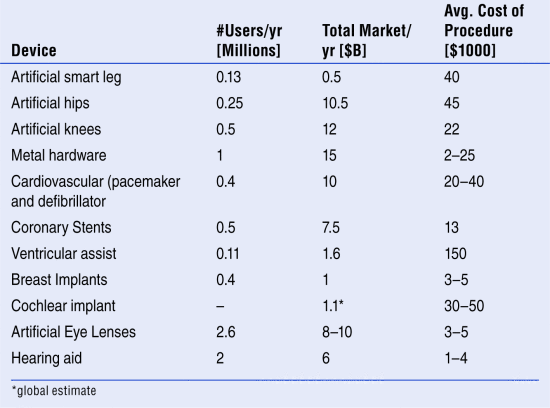
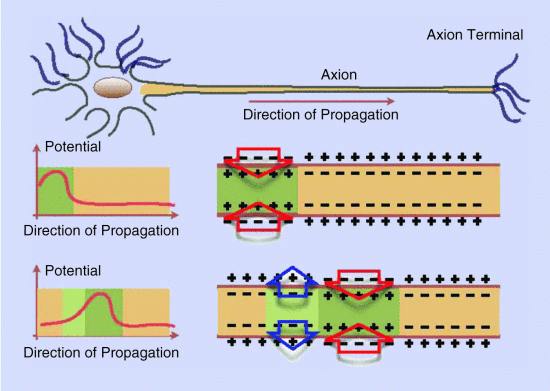

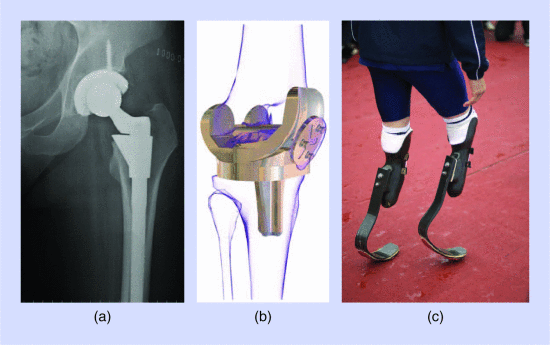

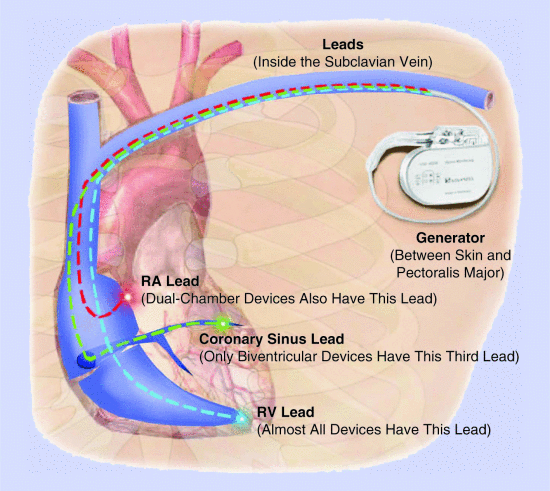
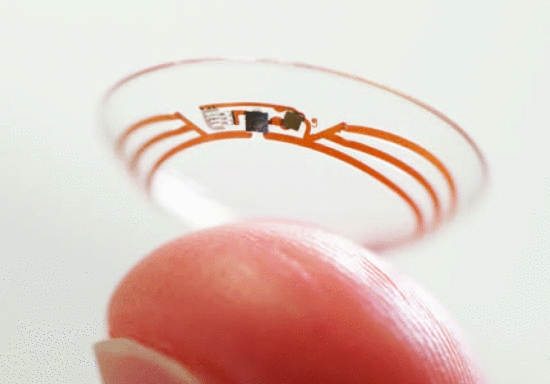
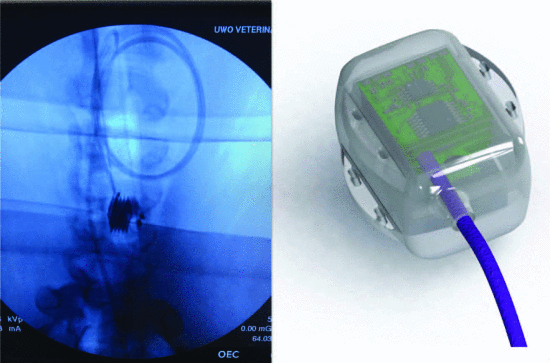

 JOIN SSIT
JOIN SSIT